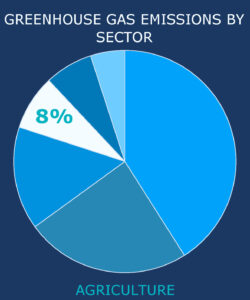
Livestock operations—including dairy cattle, beef cattle, and other animals— generate over one third of overall methane emissions in the US and over one half of methane emissions in California. The state is home to more than 1.7 million milking cows at over 1,300 dairies. According to the California Air Resources Board, the state has made significant progress on reducing methane emissions from the manure generated by the dairy and livestock sector. However, additional funding and policies are needed to address enteric emissions and enhance manure management solutions.